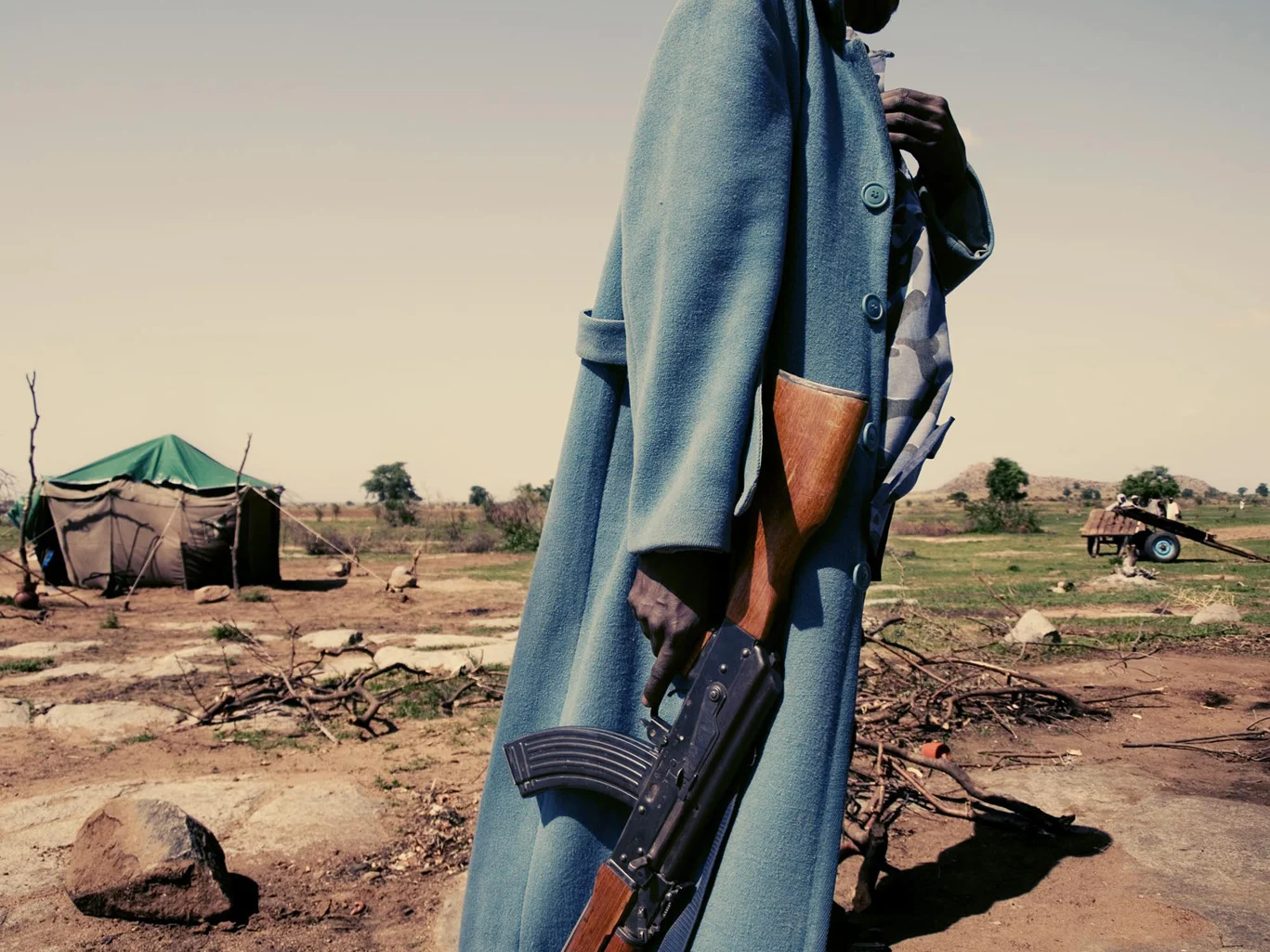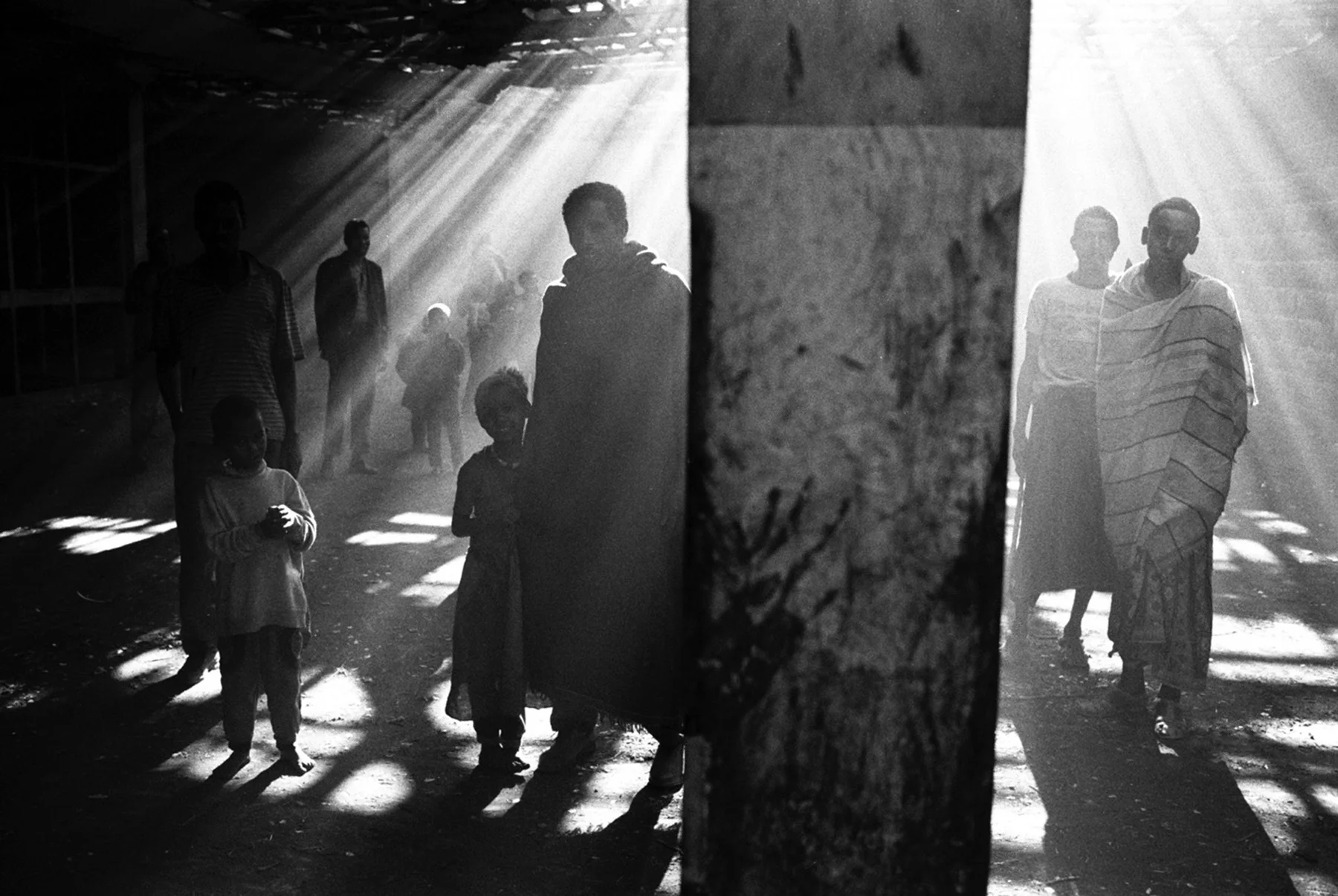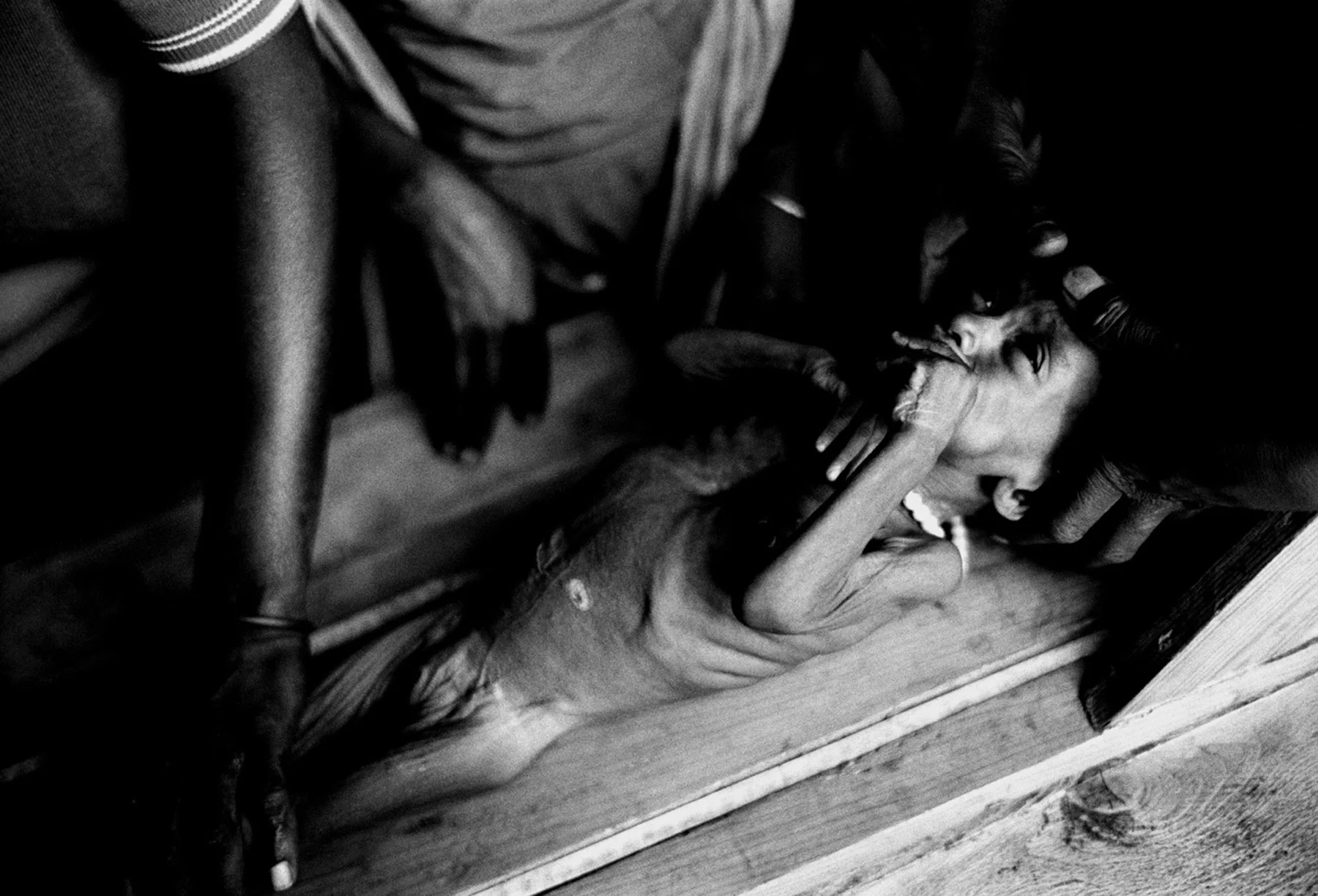




















Your Custom Text Here
I had worked in Africa with the UN over a few years, visiting many areas ravaged by war by food crisis and of course HIV/AIDS. The complicated inter action between food crisis and illness meant that in some cases I didn't really know which story I was shooting.
For example the 7th picture of the mother holding her baby... this was shot in northern Ethiopia. I had been alerted that there was potentially a food shortage and that the 'F' word was about to happen again in the region. The 'F' word is famine, a word that is overused in an attempt to get donor activity moving, the good news is that the system now is so good to warn of food crisis that 'F' is normally avoided.
Myself and a friend had travelled for days to get to the region, my pal Tom a cameraman for AP at the time, had seen this all before and was not convinced that there was famine in the region. However we did start to see animals that had died (a sure sign that the area was in a critical state) and people leaving their homes.
The mother and child seen in the 7th picture were walking around and began talking with us. The child was suffering with some malnutrition, chronic diarrhoea and had sadly tested positive for HIV.
The composite images were taken in Darfur in 2007. After convincing UNFPA that it was worth getting me into Darfur to do this story of Genocide by doing an 'Art' project I would get them an exhibition in the west end of London and the Sunday Times magazine would run the story...both happened.
The feet of the women that have run to freedom, the mouths that screamed in silence... The women on the black background is made of about 50 or so images, the clothing that was removed so the women could be raped!
The image of the women's eyes after the feet image is particularly sad tale and one that I still find hard to recount.
I was photographing at a camp near Nyala and this woman wanted me to make her portrait...whilst taking her picture she was talking and talking at me... my translator asked if I wanted to know what she was saying.
Of course.
This ladies village had been attacked, her husband and son murdered in front of her.
She was raped.
A few months later the village was attacked again.
This time she ran, running for days she just kept running.... until she passed out!
She woke to find wild dogs eating her miscarriage.......
she then ran some more until she was received at the camp where she works.
How I would love to know how she is.
These image where used by George Clooney and his site 'Not on our watch'.
They have also been shown at many universities around the globe to highlight the effects of genocide.
This trip was not without its own issues nearly getting shot, almost enduring a rocket attack and of course a rather serious dose of the Delhi belly.
All these images relate to a story that is very hard to get to the bottom of and I wish deep down that I could go and re visit, but times have changed and its harder to get access into these areas.
Two stories towards the end were shot within days of each other, one a story of a camp in the Bale mountains in south central Ethiopia, the most beautiful green mountains away from the madness of Addis. The camp had been handed over to a group of internally displaced people who had nowhere to stop, on the assurance that there were no soldiers left in the camp.
On arrival we were greeted by ICRC people who were in a bit of a panic, there were soldiers at the camp and they had been raping the women in the forest. Here lies the issue - this had then brought the HIV virus into the camp. Soldiers on the march can be an issue in the spread of the HIV virus. I had a day and a night to shoot my story and get out.
The second was closer to the capital Addis. I was in the UN office trying to arrange transport somewhere when a lady came in saying she had just heard there was a man who was curing people of AIDS in the hills above!! I grabbed my bag and off I went.. we followed a long line of people up into the Eucalyptus forest eventually coming across a group of small shed like buildings. Between the sheds was a small hill covered in shoes, the owners inside the sheds. Chanting and screaming in a total trance all of them...The man conducting this stopped and turned to me asking what I was doing? when I explained he said no to me taking any pictures and insisted that I be cleansed of my evil... I asked him that surely if he was curing people of this horrible virus that he should let the world know, he would be famous a hero.
That convinced him and I shot my story.
The images from these stories were exhibited in the UN in NY and travelled across Africa as a show and educational body of work, showing people how to protect themselves against HIV.
I had worked in Africa with the UN over a few years, visiting many areas ravaged by war by food crisis and of course HIV/AIDS. The complicated inter action between food crisis and illness meant that in some cases I didn't really know which story I was shooting.
For example the 7th picture of the mother holding her baby... this was shot in northern Ethiopia. I had been alerted that there was potentially a food shortage and that the 'F' word was about to happen again in the region. The 'F' word is famine, a word that is overused in an attempt to get donor activity moving, the good news is that the system now is so good to warn of food crisis that 'F' is normally avoided.
Myself and a friend had travelled for days to get to the region, my pal Tom a cameraman for AP at the time, had seen this all before and was not convinced that there was famine in the region. However we did start to see animals that had died (a sure sign that the area was in a critical state) and people leaving their homes.
The mother and child seen in the 7th picture were walking around and began talking with us. The child was suffering with some malnutrition, chronic diarrhoea and had sadly tested positive for HIV.
The composite images were taken in Darfur in 2007. After convincing UNFPA that it was worth getting me into Darfur to do this story of Genocide by doing an 'Art' project I would get them an exhibition in the west end of London and the Sunday Times magazine would run the story...both happened.
The feet of the women that have run to freedom, the mouths that screamed in silence... The women on the black background is made of about 50 or so images, the clothing that was removed so the women could be raped!
The image of the women's eyes after the feet image is particularly sad tale and one that I still find hard to recount.
I was photographing at a camp near Nyala and this woman wanted me to make her portrait...whilst taking her picture she was talking and talking at me... my translator asked if I wanted to know what she was saying.
Of course.
This ladies village had been attacked, her husband and son murdered in front of her.
She was raped.
A few months later the village was attacked again.
This time she ran, running for days she just kept running.... until she passed out!
She woke to find wild dogs eating her miscarriage.......
she then ran some more until she was received at the camp where she works.
How I would love to know how she is.
These image where used by George Clooney and his site 'Not on our watch'.
They have also been shown at many universities around the globe to highlight the effects of genocide.
This trip was not without its own issues nearly getting shot, almost enduring a rocket attack and of course a rather serious dose of the Delhi belly.
All these images relate to a story that is very hard to get to the bottom of and I wish deep down that I could go and re visit, but times have changed and its harder to get access into these areas.
Two stories towards the end were shot within days of each other, one a story of a camp in the Bale mountains in south central Ethiopia, the most beautiful green mountains away from the madness of Addis. The camp had been handed over to a group of internally displaced people who had nowhere to stop, on the assurance that there were no soldiers left in the camp.
On arrival we were greeted by ICRC people who were in a bit of a panic, there were soldiers at the camp and they had been raping the women in the forest. Here lies the issue - this had then brought the HIV virus into the camp. Soldiers on the march can be an issue in the spread of the HIV virus. I had a day and a night to shoot my story and get out.
The second was closer to the capital Addis. I was in the UN office trying to arrange transport somewhere when a lady came in saying she had just heard there was a man who was curing people of AIDS in the hills above!! I grabbed my bag and off I went.. we followed a long line of people up into the Eucalyptus forest eventually coming across a group of small shed like buildings. Between the sheds was a small hill covered in shoes, the owners inside the sheds. Chanting and screaming in a total trance all of them...The man conducting this stopped and turned to me asking what I was doing? when I explained he said no to me taking any pictures and insisted that I be cleansed of my evil... I asked him that surely if he was curing people of this horrible virus that he should let the world know, he would be famous a hero.
That convinced him and I shot my story.
The images from these stories were exhibited in the UN in NY and travelled across Africa as a show and educational body of work, showing people how to protect themselves against HIV.
Young child, Luena, Angola, Leica M6
Malawi, Hospital, Leica M6
Darfur, soldier
Darfur camp.
Darfur,
Wheelbarrow, Angola, Leica M6
On the road to Addis, Leica M6 Tri X
Food crisis, Ethiopia Leica M6
Water, Kenya Mamiya 7
Food crisis coffin workers. Leica M6
HIV/AIDS Leica M6
Sex worker, Leica M6
On the road, Afar. Leica M6
Bale camp, Leica M6
Bale, Leica M6
Bale camp, Leica M6
Aids curing, Leica M6
Desert storm, Ethiopia, Leica M6